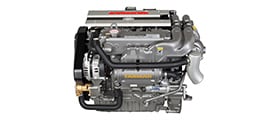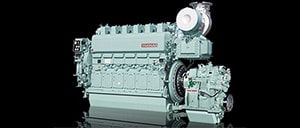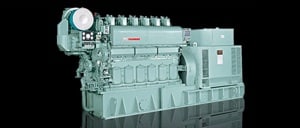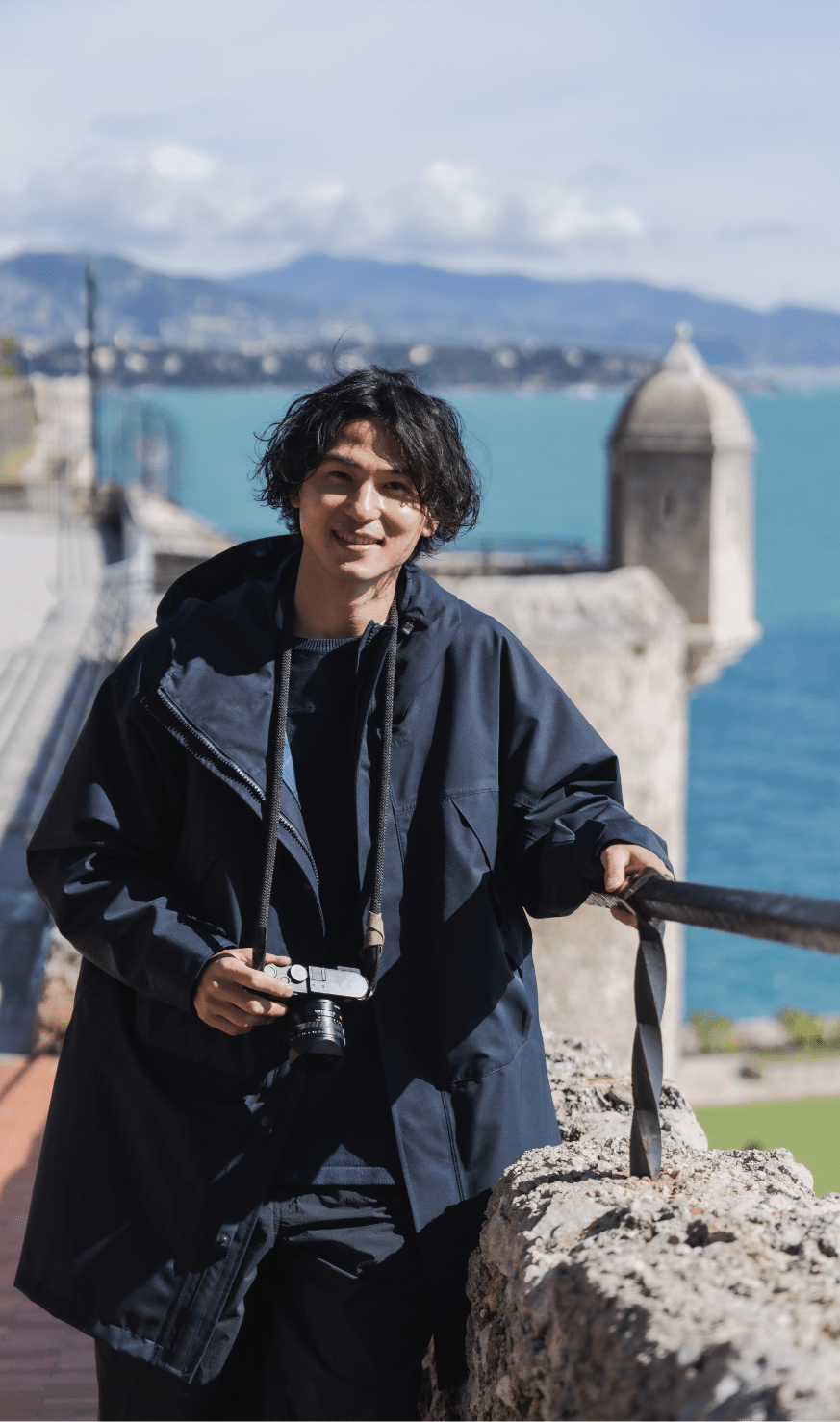




What’s the
“new abundance”
pursued by
Takumi Minamino’s
new base, Monaco?
Participating in this "MINAMINO REPORT" has helped Takumi Minamino discover even more about the sustainability of food, farming, and urban environments, while seeing how this relates to the work being done by YANMAR CO., LTD. So how are Monaco’s initiatives in these three sectors linked, and how will they take us toward a sustainable future? Monaco, where Minamino currently lives, is actually a leader in promoting sustainability, integrating its goals for these various sectors.
※ The previous article is here.
The trend toward urbanization will lead to fewer large development projects and more renovation and maintenance projects instead. Compact construction machinery will be a key asset for such operations.
Some staff in the Yanmar R&D team are about to lead Minamino further into the world of construction machinery technology.
Living in Monaco, a "paradise on earth"
A 30-minute bus ride from Nice Côte d'Azur International Airport in France takes us directly to the Principality of Monaco, a sovereign city-state on the Mediterranean Sea. The second smallest country in the world, with a size no more than the Imperial Palace grounds in Tokyo, Monaco is a wonderful blend of luxury resorts and old European charm. Minamino has spent about two years there so far.
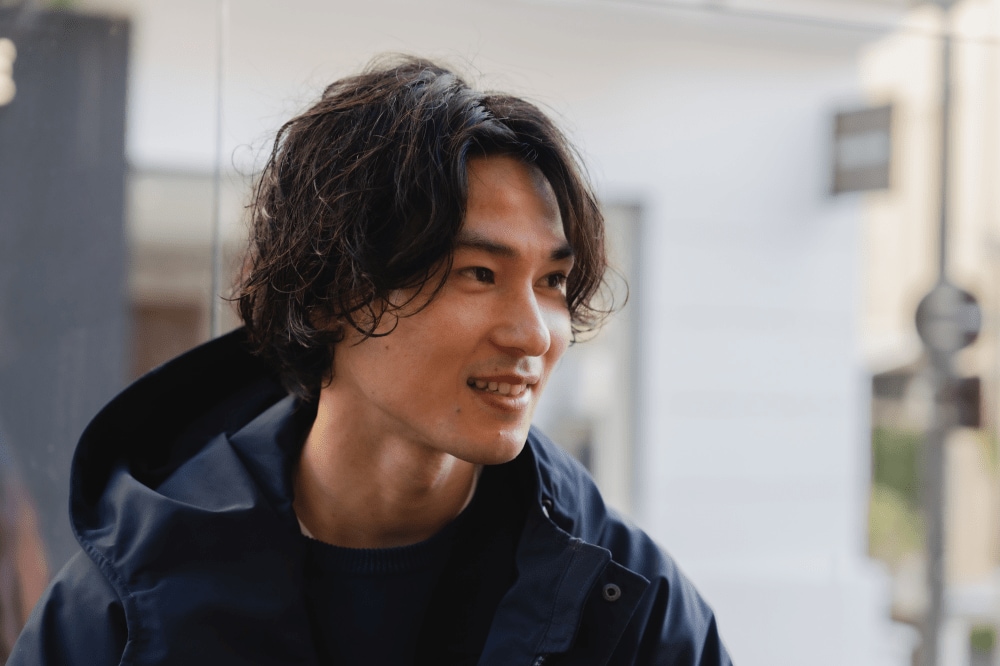
“The most captivating aspect of life in Monaco is its magnificent natural surroundings and its consistently sunny weather. In particular, views of the sea from higher elevations relax me right away.”
He breathes in Monaco’s air, showing how happy he is to be there. One look at him shows he is really attached to this place.
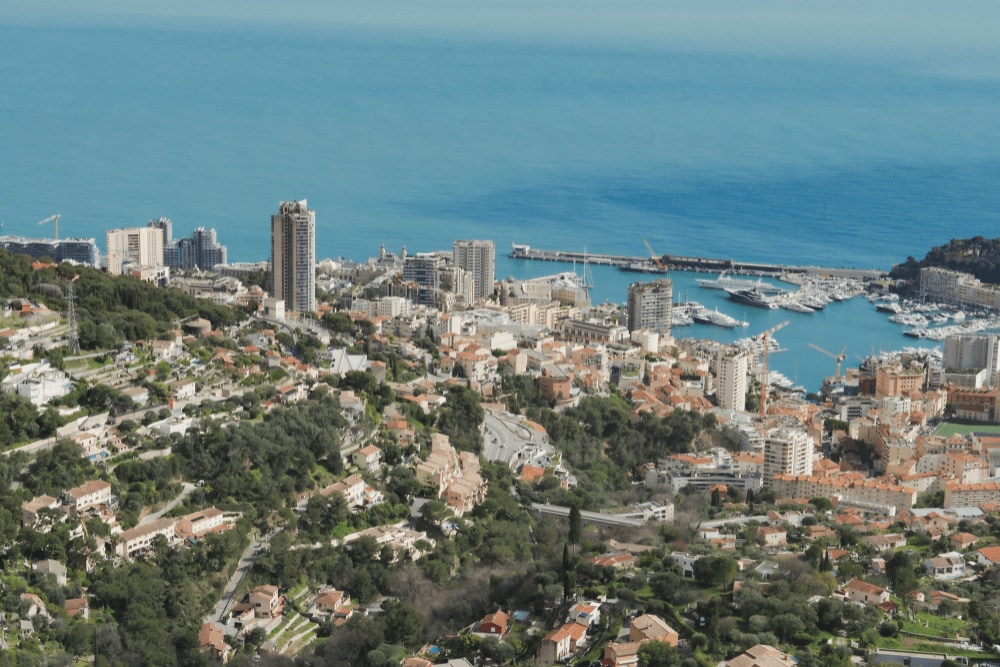
The view from the heights of Monaco is like a wonderful work of art. The blue of the Mediterranean Sea blends into the sky, the landscape is a stunning blend of contemporary architecture and charming historic streetscapes.
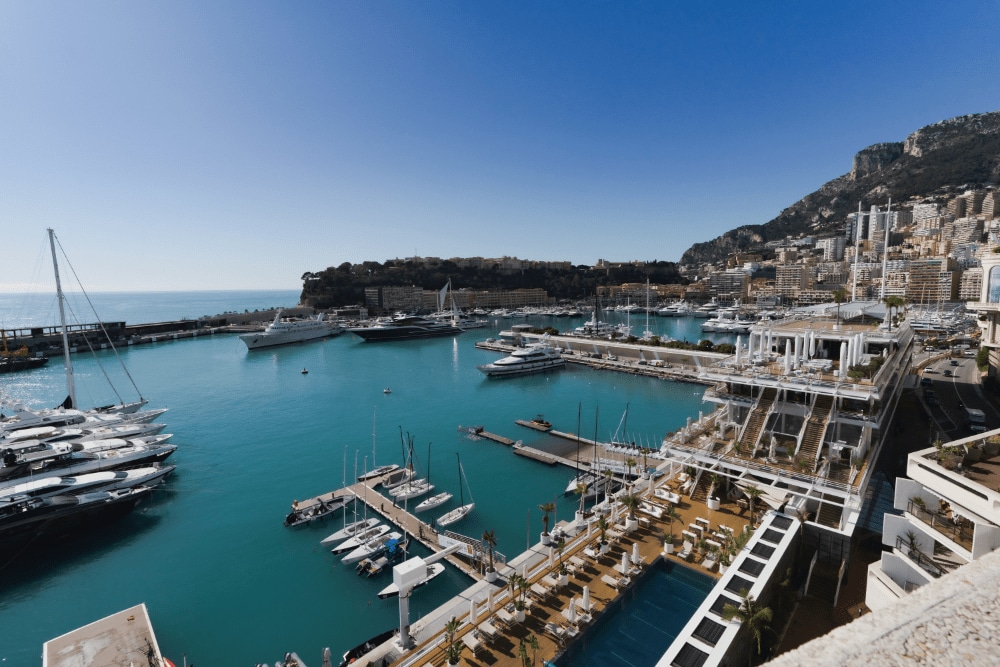
Luxury yachts docked in the harbor remind us of Monaco’s dynamism both day and night. We ask Minamino how Liverpool, where he lived before, compares with Monaco, and if he’s satisfied with his new surroundings.
“Monaco is unique, it’s a country like no other. It’s difficult to compare, but the fact that this country is so livable makes it truly attractive. Back in Liverpool, I found the weather quite harsh, but this is by far the most comfortable in that respect as well. When I host family and friends they all agree it’s safe and beautiful here, an agreeable place to be.”
Daily life in Monaco provides a getaway from hectic routines, replacing them with a sense of tranquility. For Minamino, it is more than just a place to live. Talking with him, one gets the impression that for him, this place is a “paradise on earth.”
The future as envisioned by Monaco: The ideal may once have been luxury, but now it’s the pursuit of “responsible luxury”
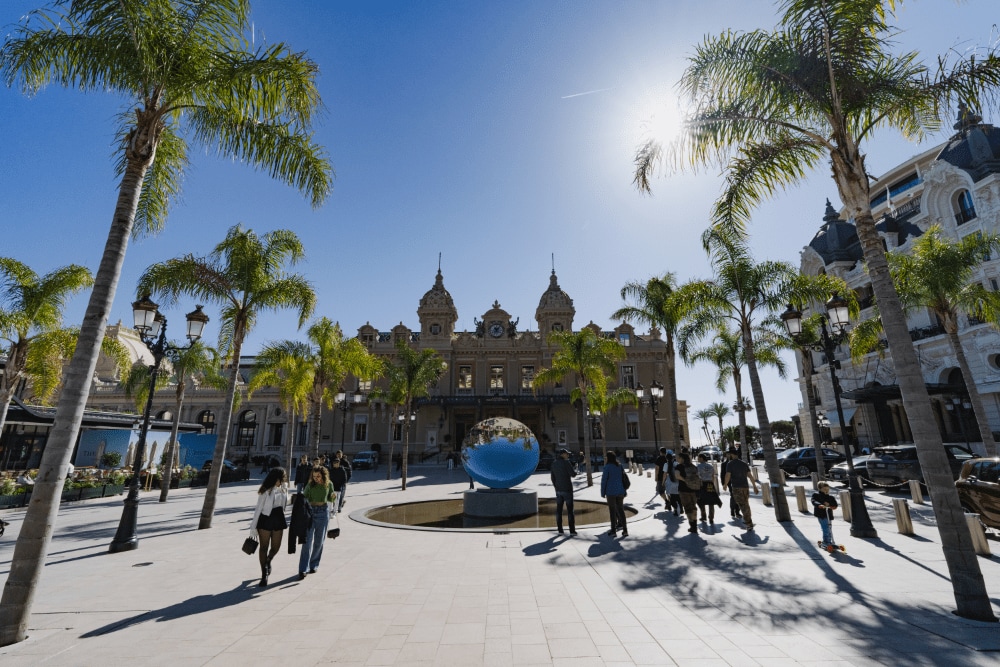
Monaco is certainly an attractive luxury resort with casinos and Formula 1 racing. But over the last few years it has also been leading the way in revitalizing farming and promoting sustainable lifestyles, based on the concept of “responsible luxury.” The perspective has shifted from highlighting luxury for the sake of opulence and extravagance, to a pursuit of a different kind of abundance.
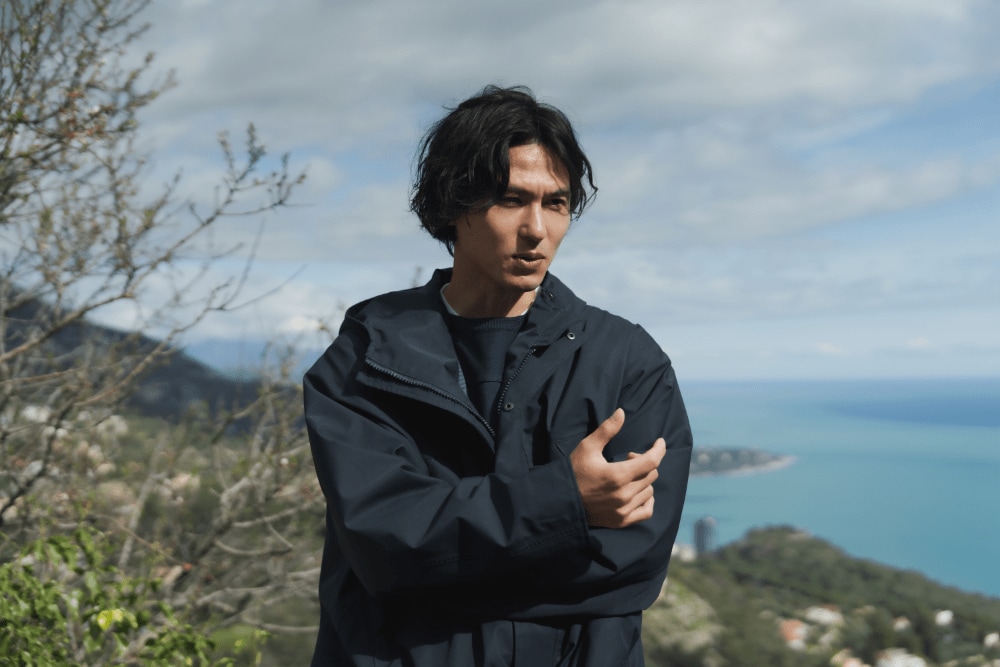
In concrete terms, at the national level, its leadership is committed to a reduction of 55% in Monaco’s greenhouse gas emissions from 1990 levels by 2030, and to carbon neutrality by 2050. The aim is to address climate change and build a sustainable future.
When asked about the sustainability initiatives underway in Monaco, Minamino says candidly, “Actually, I wasn’t really aware of them before. But one thing I’ve learned is that our third jerseys at AS Monaco are made from recycled fabric, and are used to support marine conservation.”
In past issues of our MINAMINO REPORT we highlighted various initiatives for sustainability and some interesting approaches being taken. Now Minamino is eager to explore more deeply how he can contribute to tackling environmental issues.
“Some of the things I’m seeing in Monaco can perhaps be applied to Japan and other countries as well. By deepening my knowledge of sustainability and sharing it widely, I hope to raise that awareness among a wider audience.”
A visit to an official representing Monaco-Japan ties reveals a big step forward for a small country
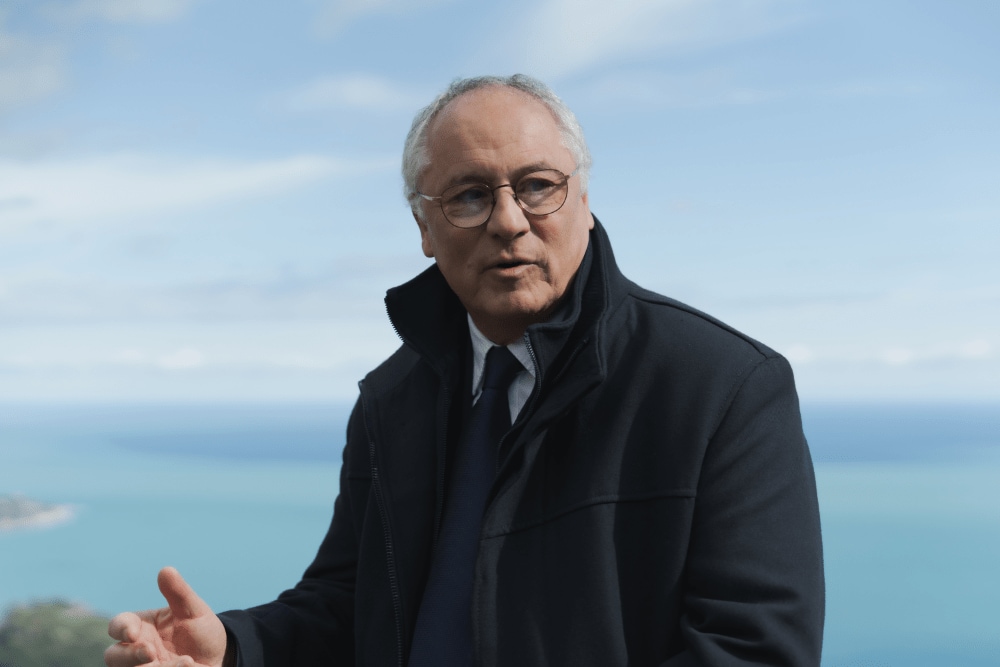
We first go to see Eric Benchimol, Honorary Consul General of Japan in Monaco — this was the start of our journey to explore Monaco’s commitment to sustainability. Benchimol has promoted exchanges between Japan and Monaco and contributed to stronger amicable relations in a wide variety of fields, including culture, the arts, sports, and the economy. He is a cultural bridge between the two countries.
Minamino and Benchimol have become friends since the Honorary Consul General facilitated his move to Monaco. As friends they get caught up in an animated conversation.
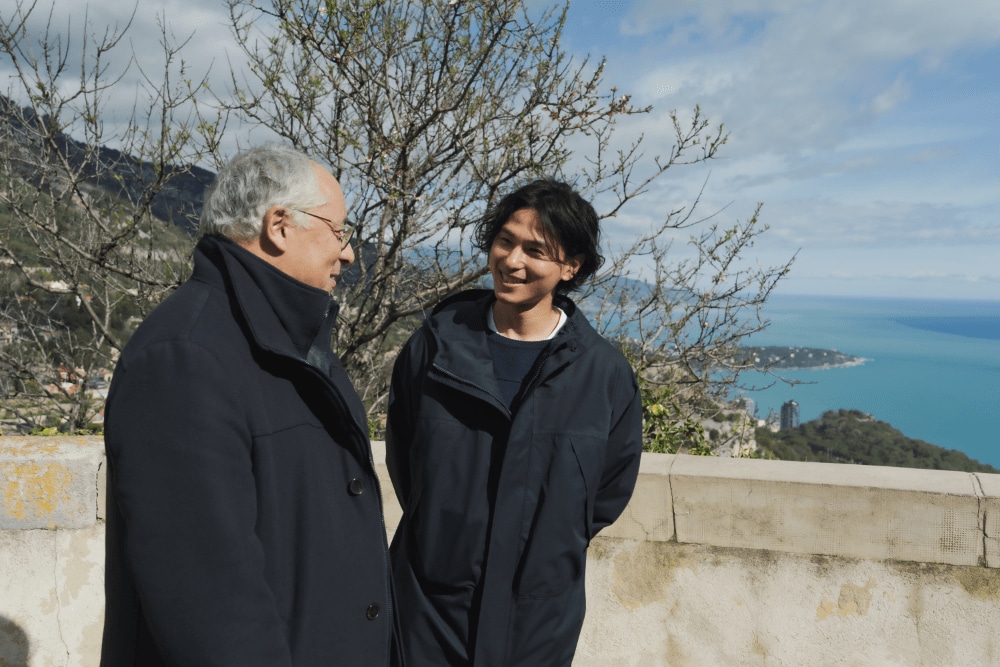
“I got to know Eric because he supported me in many ways when I first got my visa to play here. He’s always ready to help me with banking procedures, passport issues, and other aspects of my life beyond football. His support extends to other Japanese people living in Monaco as well.”
Benchimol is also a football enthusiast. He is often at the stadium when Minamino’s AS Monaco team are playing, and has been a fan of Minamino since his Liverpool days.
“I was following the progress of this Japanese athlete, and I’m very happy he came to play for Monaco.”
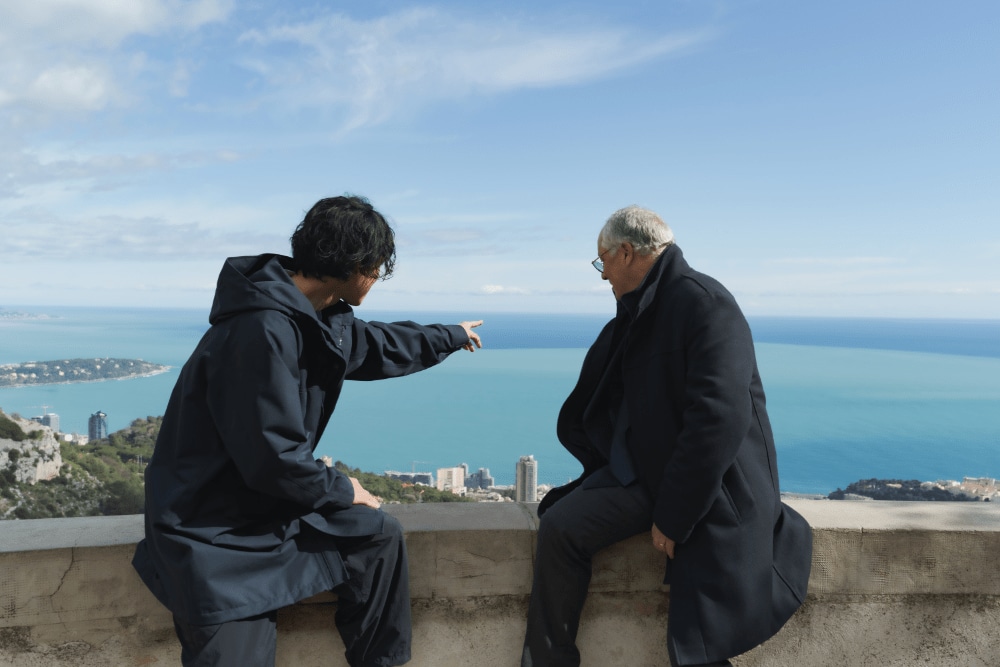
With a spectacular view of the Mediterranean Sea in the background, the two discuss Monaco’s sustainability goals. Benchimol tells us how Monaco has moved beyond its view of luxury to launch initiatives for environmental protection.
“The current head of state of the Principality, Prince Albert II, established the Prince Albert II of Monaco Foundation with the aim of preserving the environment, and began working on environmental issues in 2010. In 2018, Monaco announced the concept of ‘responsible luxury’ to the world. Today, the country offers experiences that let visitors opt for sustainable conduct while enjoying a luxury vacation.”
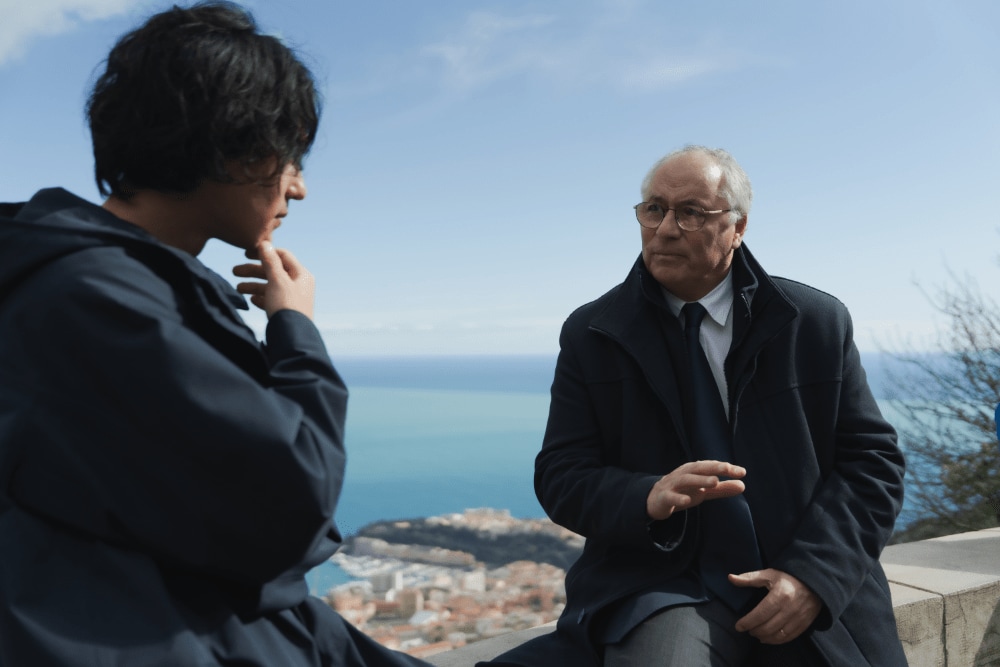
Benchimol tells us that Monaco was proactive in environmental protection even before the United Nations adopted the Sustainable Development Goals (SDGs), which are now widely accepted.
“Monaco combines environmental awareness with a high quality of life, showing leadership in environmental protection and the SDGs as a nation that values integrity, not just luxury. In the tourism industry, for instance, we are actively communicating, both at home and internationally, our efforts to reduce environmental impact. This can be seen in the White Paper on Responsible Tourism in the Principality of Monaco, published in November 2021.”
Monaco’s initiatives for a sustainable future open the door to new possibilities
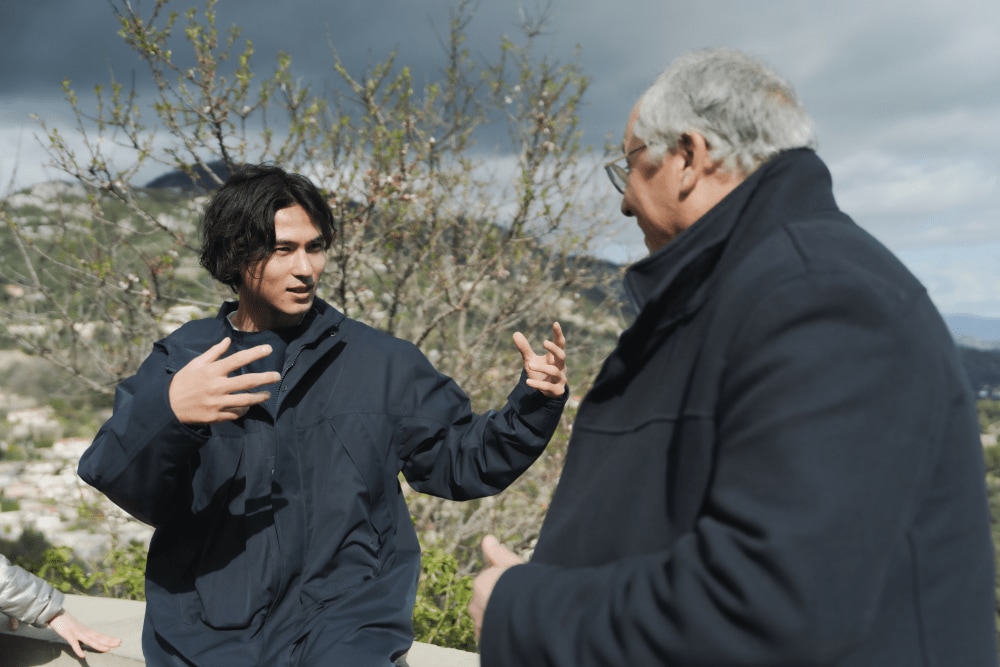
“Monaco is taking advantage of its small size to implement a variety of progressive environmental measures. Could you give us some specific examples?”
Minamino has been listening with interest, and Benchimol answers his question with a thoughtful expression.
“Sure. Since 2020, Monaco has carried out ambitious plans for the total abolition of plastic bag usage, full electrification of transit buses, and reductions on the use of paper. Also, hotels for tourists and event venues are adopting green (hydroelectric) power for air conditioning. Eco-friendly transportation infrastructure is being developed in line with the country’s small size, and the government provides support for the purchase of electric vehicles, covering up to 10,000 euro for each one.”
The conversation seems to have given Minamino new insights.
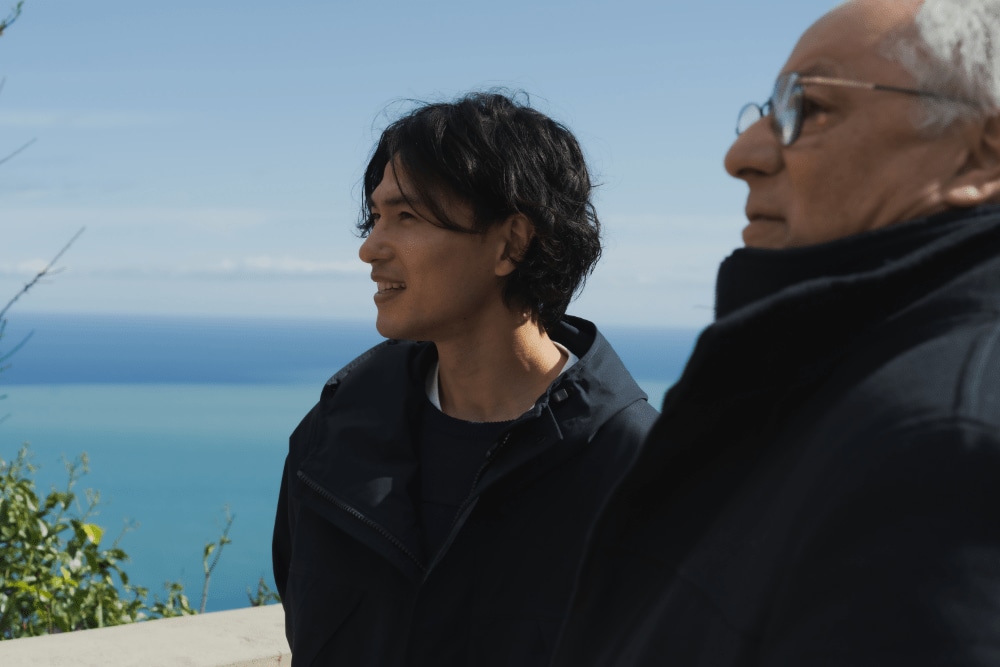
“Monaco’s case shows how to take advantage of technological innovation and put environmental awareness into practice with limited resources and land area, working for a sustainable future. I feel that these developments are opening up new possibilities in sustainability. A strong commitment to environmental protection, regardless of the size of the country, sends an important message to the world. I mean, every country should be proactive in addressing environmental issues.”
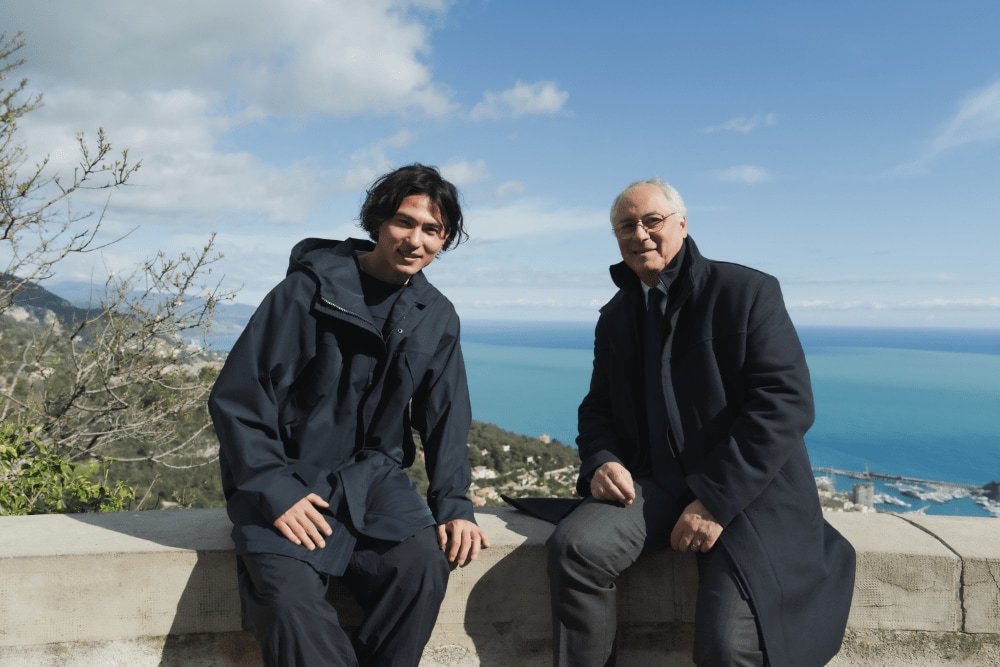
These are essential and concrete actions for a sustainable future, highlighted during his conversation with Benchimol. Next, Minamino takes us to where his club, AS Monaco, trains. We are about to discover some examples of sustainability in practice.
From a green sports field to the blue sea: Sustainability, a goal shared equally by Takumi Minamino and AS Monaco
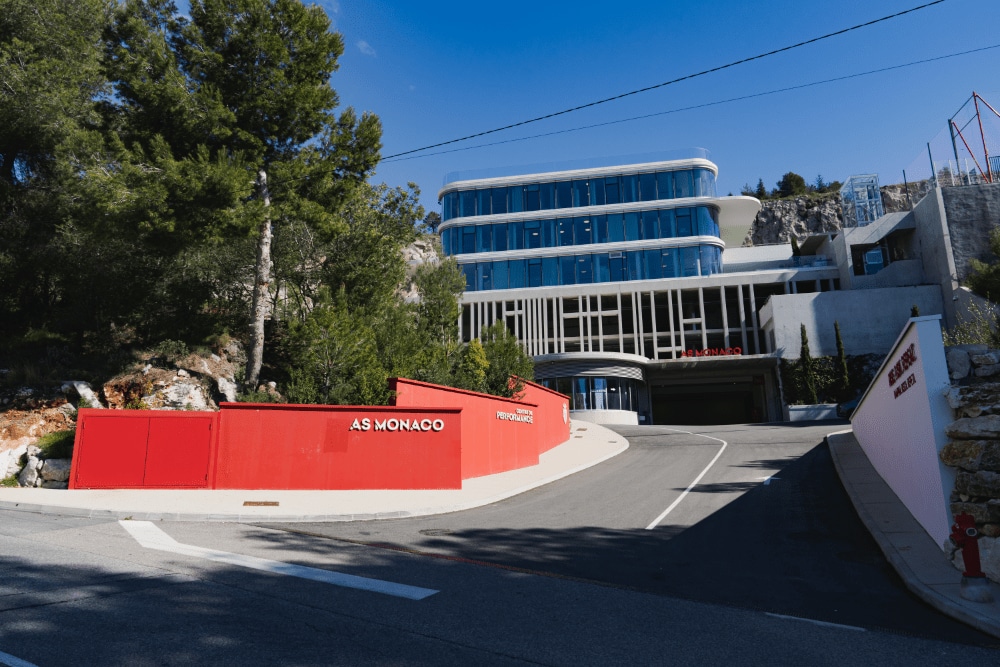
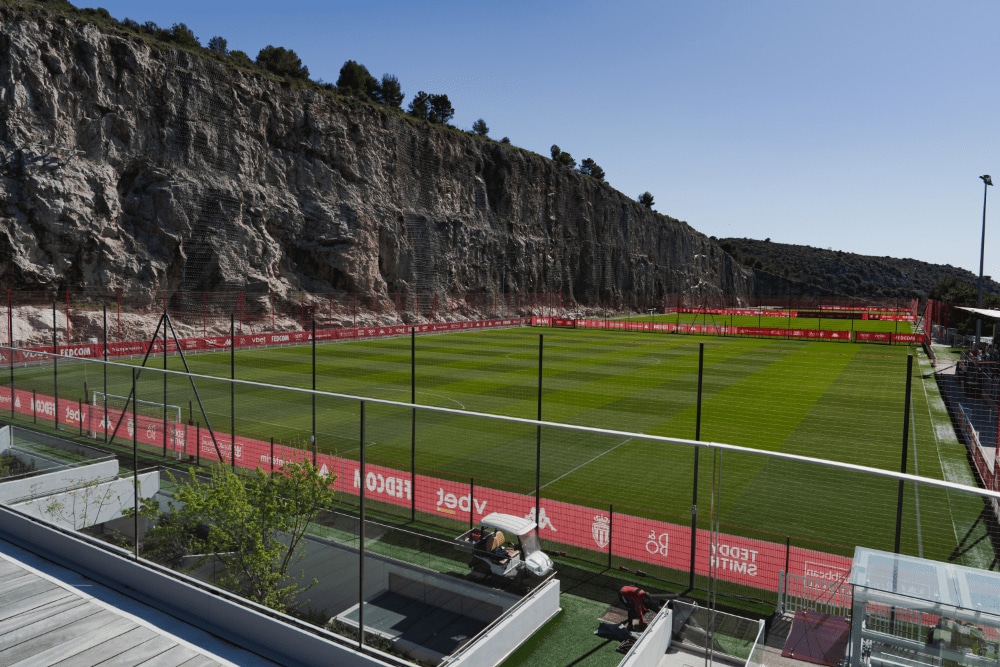
He takes us to La Turbie, the training ground for his team AS Monaco. It is on high ground in a good location for breathtaking scenery. The AS Monaco facility, key to the team’s performance improvement efforts, was designed under the influence of the most advanced training centers in Europe.
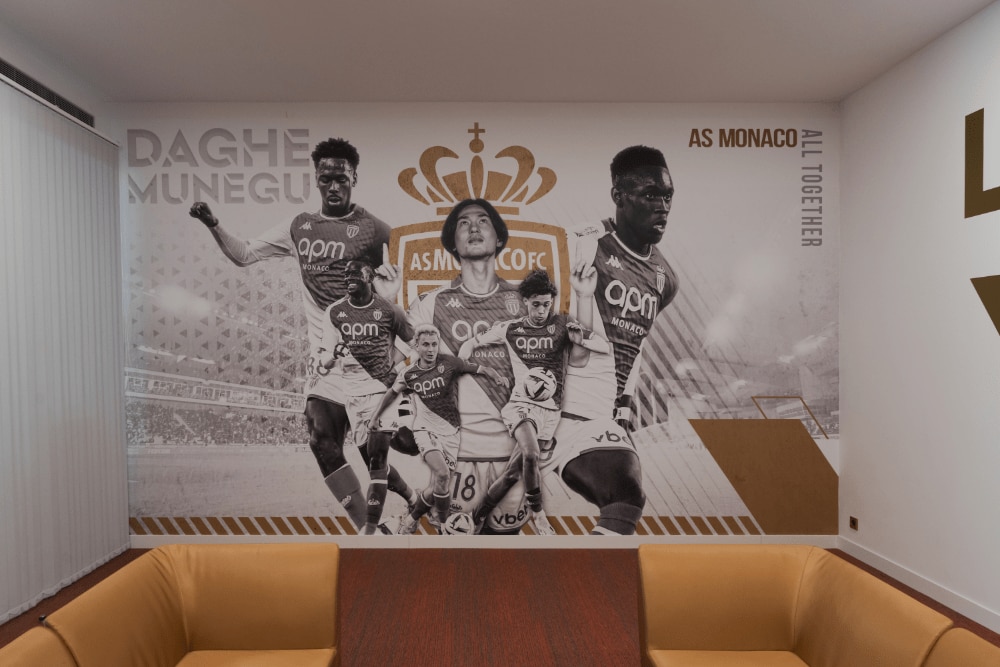
We are led to a room and come up to a collage of murals that tend toward the monotone.
At its center is a powerful depiction of Minamino.
“AS MONACO” and “ALL TOGETHER” are prominently displayed in the upper part of the wall — proof of the importance of unity and teamwork in the club. The atmosphere makes visitors feel they are part of the club’s history.
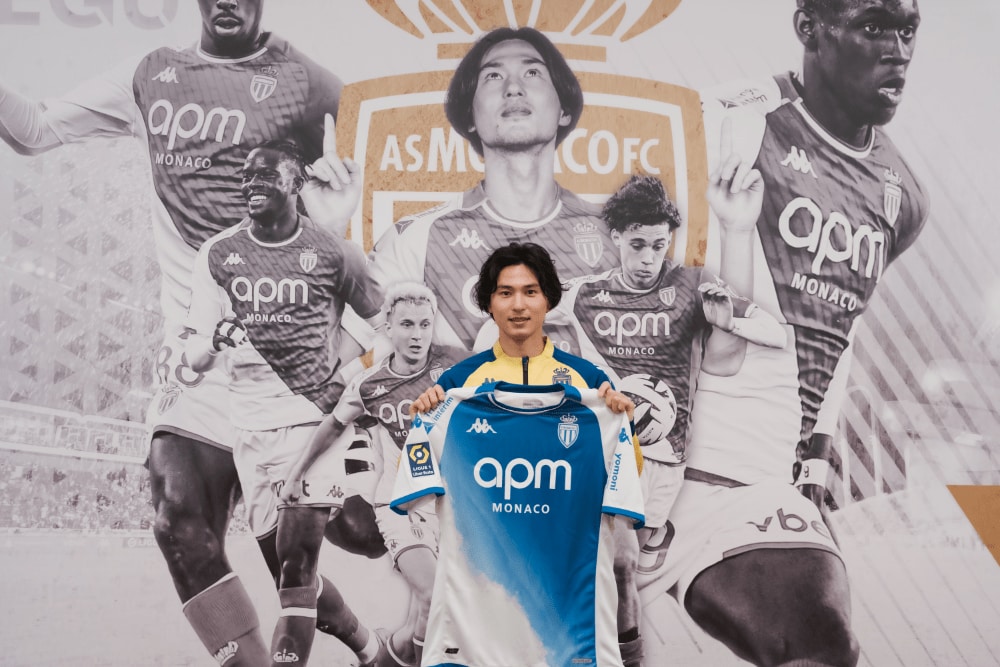
Our reason for visiting this facility is to get a closer look at the partnership agreement signed by AS Monaco and the Oceanographic Institute of Monaco in April 2023. That partnership is manifested in AS Monaco’s third jerseys, which are named “OCEANO”.
The jerseys feature a gradation of blue to white, representing the Mediterranean Sea and the beautiful Riviera coast, and shining a light on the beauty of irreplaceable marine environments. Notably, part of the proceeds from the sale of these uniforms, made from 100% recycled polyester, is donated to the Institute, contributing to key efforts to protect the oceans.
AS Monaco’s strong commitment to sustainability demonstrates the sporting community’s emphasis on environmental protection.
Football balls for a sustainable future
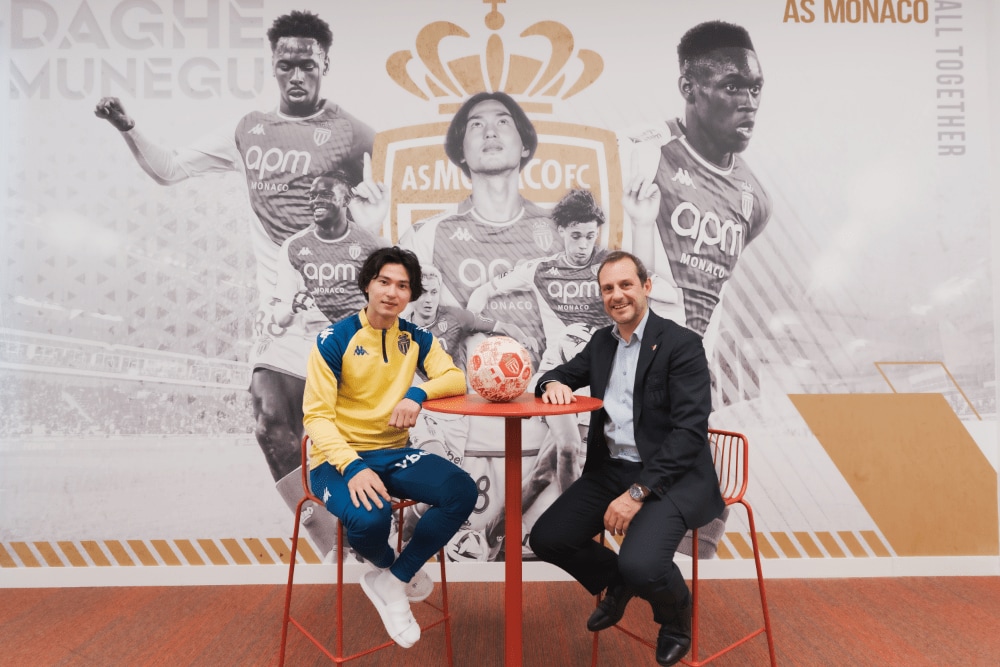
Minamino is soon talking with Thibaut Chatelard, AS Monaco’s chief marketing and revenue officer. Now we have an opportunity to discover more about the team’s sustainability efforts.
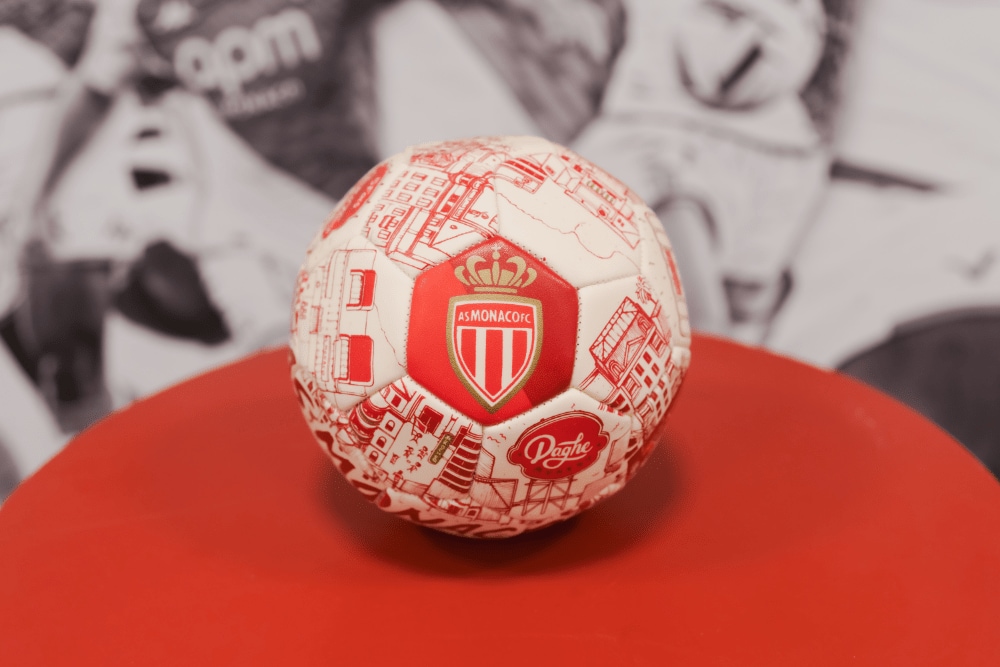
With a football in his hand, Minamino raises the question, “Is this ball part of a sustainable project?”
Chatelard explains, “Yes, it was made using recycled materials. The manufacturing process was undertaken by the firm Rebound, with funds raised through crowdfunding. The design incorporates various motifs linked to our club, like the fact we were founded in Monaco in 1924, and the fact that AS Monaco has won the Coupe de France *1 five times. The motifs honor AS Monaco’s rich history and achievements, and celebrate the club’s never-to-be-forgotten moments.".
*1 Note: The Coupe de France is France’s premier knockout cup competition. It began in 1917. Open to both professional and amateur players, it attracts teams of various levels from all over France. It is very popular throughout the country, and the winning team qualifies to play in the UEFA Europa League.
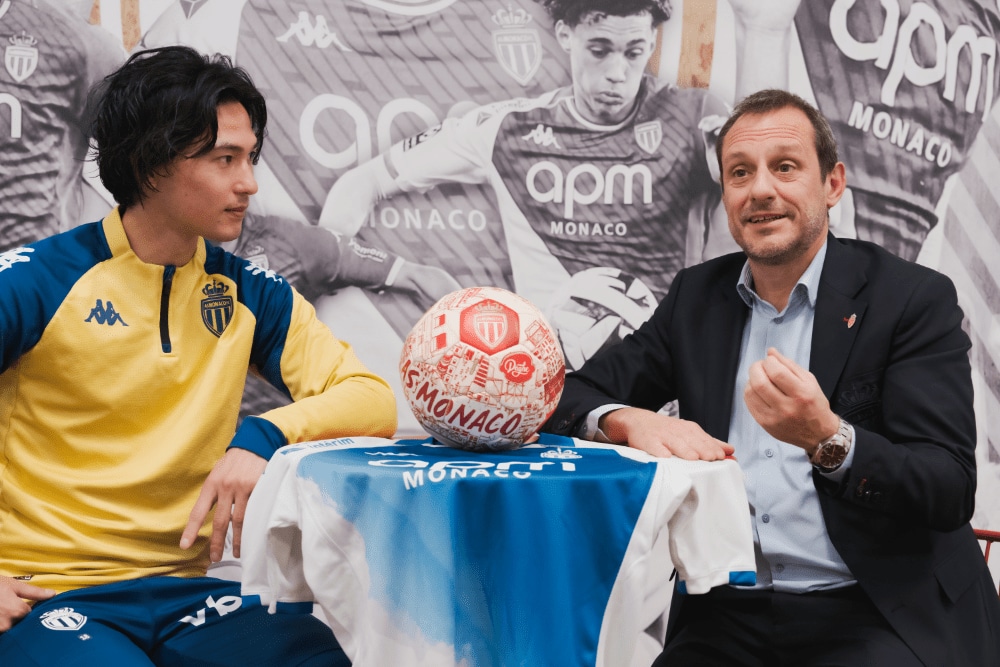
“Rebound, the company manufacturing the balls, uses them with us mainly for promotional purposes. It aims to have them used in all leagues in the future. A portion of the proceeds from their sale is donated to support the Oceanographic Museum of Monaco,” adds Chatelard.
Minamino comments on the project’s meaning: "Even for a simple football ball, it’s clear how serious our club is about a sustainable future.”
Wearing the AS Monaco uniform symbolizes efforts to save the future of our planet
Minamino wants to know more: “What inspired AS Monaco to contribute to protecting the marine environment using uniforms and balls made of recycled materials?”.
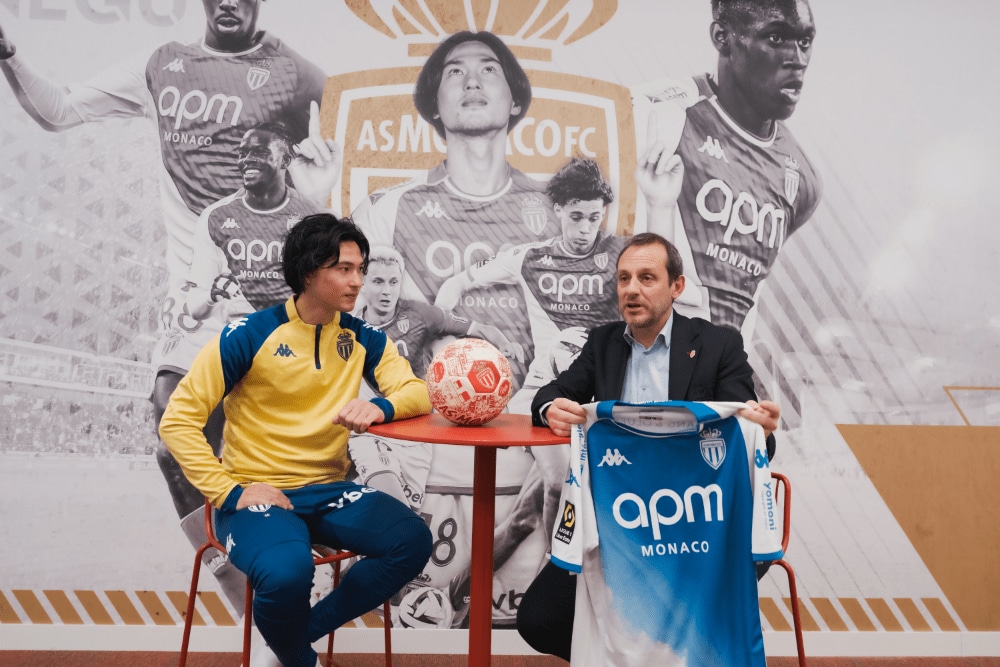
“AS Monaco is committed to sustainability, while at the same time prioritizing the comfort of the athletes. One example is our third jersey, made from 100% recycled polyester.
The jersey design highlights blue and white, two colors that call to mind the gorgeous scenery of the Mediterranean Sea and the Riviera coast. The diagonal pattern represents an ocean wave. This environmental concern is further demonstrated by our partnership with the Oceanographic Institute of Monaco — an important step taken by the world of sports toward a sustainable future, raising awareness of the vulnerability of the seas and the need to protect biodiversity,”
says Chatelard. “We hope to use social media to send a message to our 24 million fans and supporters, communicating the importance of sustainability through these uniforms.”
Minamino is impressed: “Those are wonderful initiatives.” They demonstrate AS Monaco’s firm commitment to sustainability, and its active promotion of ideals that are part of the club’s identity.
“For every sale of a third jersey, 5 euros are donated to the Oceanographic Institute to support ocean protection activities,” explains Chatelard. “Our efforts help protect oceans and marine life not only in Monaco but around the world, fulfilling our responsibility to the global environment,” he says with pride.
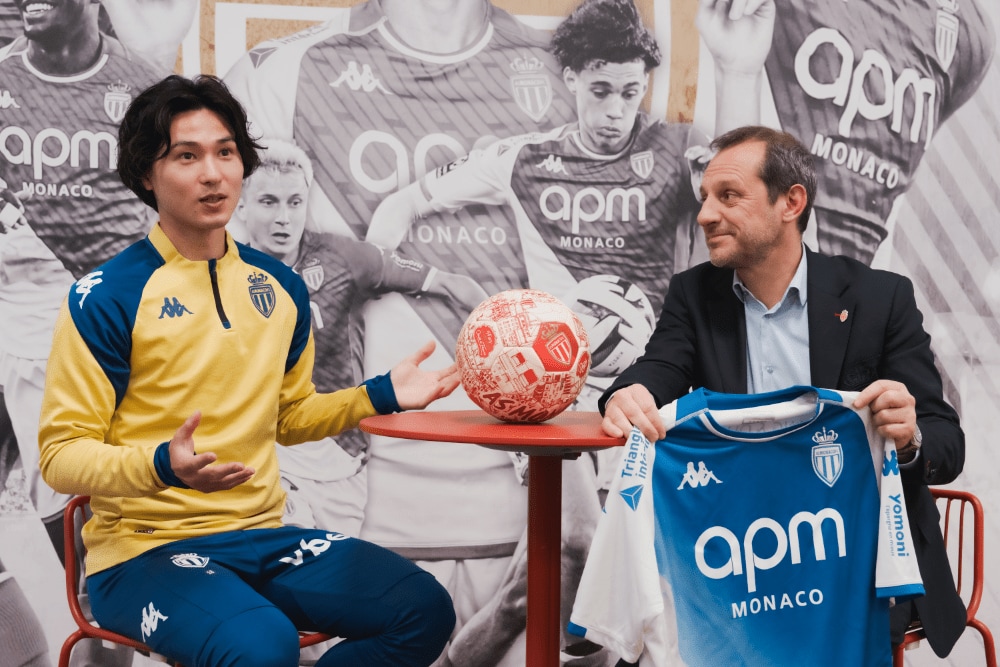
Minamino agrees wholeheartedly. “When I wear the uniform and step on the pitch, the underlying message strikes a chord in me. AS Monaco’s dedication working for environmental protection makes us players feel we are part of a great mission. While it’s obviously important to do our best to win, we also realize that contributing to the global environment and having a positive impact on future generations are also important responsibilities.”
Chatelard takes inspiration from this. “There’s no doubt our jerseys have a significance that is more profound than what we generally see in sports gear. They inspire fans and deepen their attachment to our club. Our aim is to spread the important message of environmental protection through our jerseys, contributing to a better future for our planet. We’re going to continue on this path and convey the message to as many people as possible.”
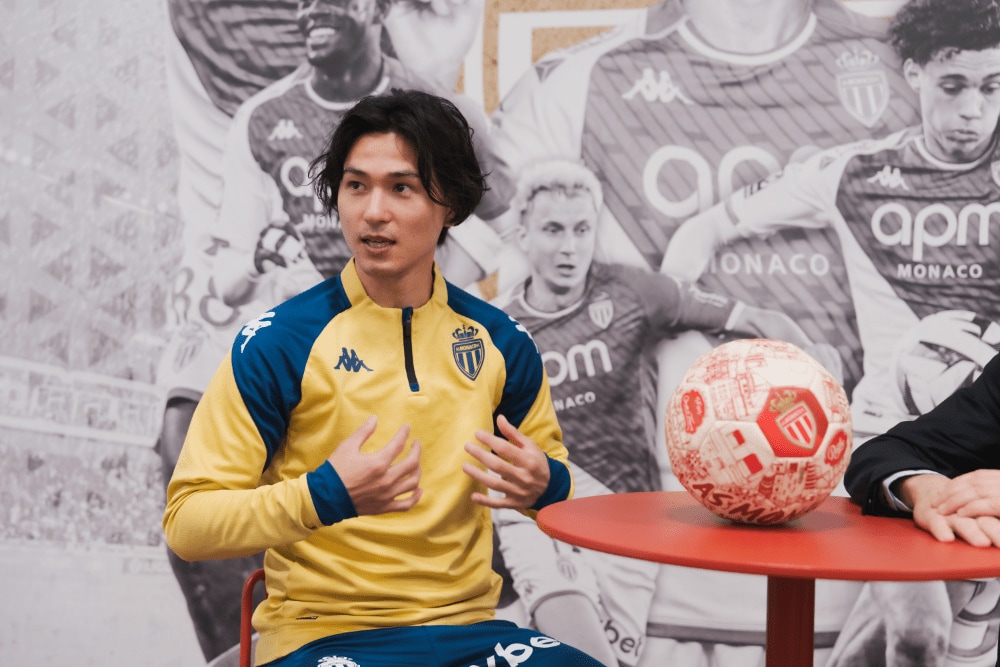
Afterward, Minamino shares his thoughts on his own role.
“As a player, I want to contribute to this great movement. I’m really proud to be part of a club that is using recycled materials and donating to marine conservation, for environmental protection. I’ll do my best to make sure our club maintains its cooperative relationship with the Oceanographic Institute of Monaco, and promotes more activities that contribute to the protection of our planet.”
Situated in a beautiful natural environment facing the Mediterranean Sea, the Principality of Monaco is a place where culture and marine conservation have been nurtured for many years. AS Monaco and its players’ sincere commitment to environmental protection are decisive in raising awareness of a sustainable future, through football. We hope that these activities will contribute to raising environmental awareness throughout the sports world, including of course football.





